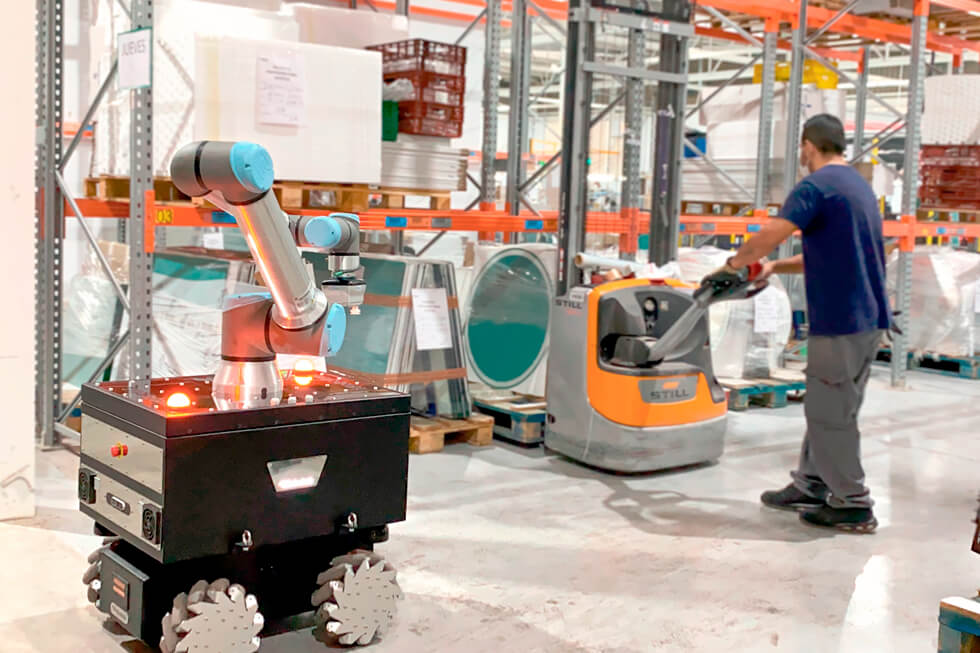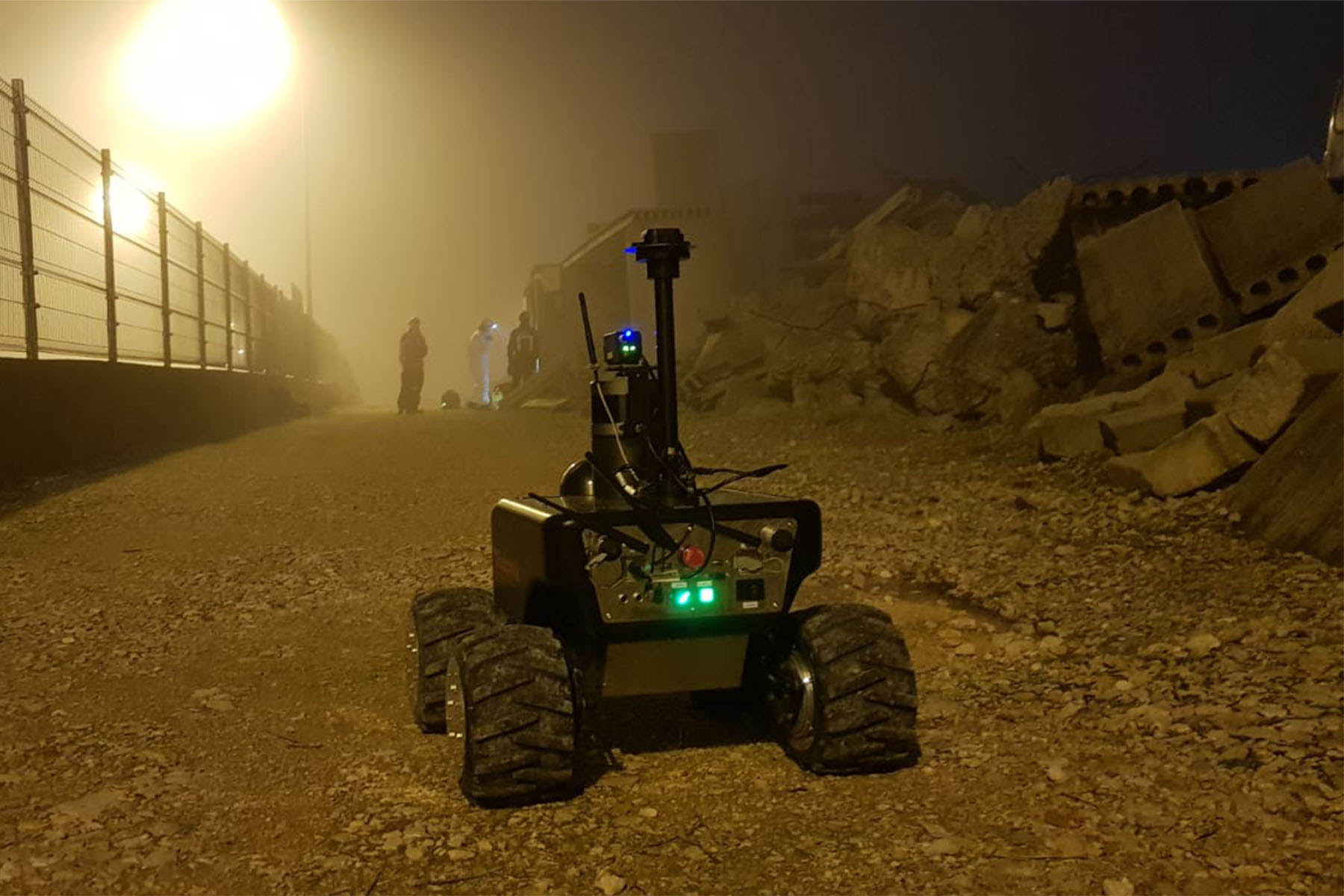Since autonomous mobile robotics are part of the industrial scenario, the way in which both production and the management of manufacturing processes are carried out has changed.
There is basically one main advantage of using robots in industry: it improves human well-being.

Experts in the robotics sector agree that autonomous mobile robots and manipulators are intended to take on tasks that are dangerous, repetitive or tedious for people. There is a common way to categorize these types of tasks: the 4 D’s: Dull, Dirty, Dangerous and Dear. These tasks are challenging for workers as they involved monotony, health risks and significant costs. However, automation through autonomous mobile robotics effectively solves the problem.
Below we explore the benefits of industrial robots and how they improve the famous 4 Ds.
DULL: WHY ARE ROBOTS USED FOR REPETITIVE JOBS?
Tedious and routine tasks have been a constant source of concern for employees as they can trigger boredom, fatigue and a decrease in work efficiency.
A clear example is the use of autonomous robots in logistics and internal transport in warehouses. Previously, workers had to perform monotonous tasks each day for hours such as moving pallets from one place to another, scanning barcodes and sorting products. Now, autonomous mobile robots can do all this efficiently and relentlessly. This frees human workers from boring tasks and allows them to focus on more creative and strategic activities, which bring them greater value.
Another example of this happens in the agriculture sector where autonomous mobile robots such as RB-VOGUI are also revolutionizing the way repetitive tasks are handled (harvesting or phytosanitary processes, for example). Agricultural robots can plant, harvest and care for plants accurately and consistently, eliminating the need for farmers to spend hours performing these routine tasks. This not only reduces tedium but also increases efficiency and productivity in agriculture.
DIRTY: AUTOMATION IN 'DIRTY' ENVIRONMENTS
Dirty environments can be considered those factories that handle toxic substances, mines, disaster areas or anyone that, due to the nature of their activity, may be harmful to the health of workers. Tasks involving the handling of hazardous substances or exposure to unsanitary conditions are a real risk to human labour. This is where autonomous mobile robotics comes into play.
In factories, for example, autonomous mobile robots can take over tasks that involve handling toxic or hazardous materials such as paints and chemicals. This not only protects the health of workers, but also reduces the risk of workplace accidents and spills. An example of this is the electronic waste recycling plant of the HR-RECYCLER project.
Autonomous robots can also explore underground tunnels for minerals without exposing workers to hazardous environments. In addition, they can perform rescue tasks in disaster areas, where human presence can be risky due to exposure to debris, chemicals or radiation.
DANGEROUS: RISK REDUCTION FOR WORKERS
Another frequent concern in the industry is the execution of those dangerous tasks that put the integrity or health of employees at risk. Autonomous mobile robotics has proven to be an effective solution to reduce these risks.
In the construction industry, autonomous robots can perform tasks such as demolishing buildings in hazardous conditions or mapping deteriorated constructions. This prevents workers from being exposed to unstable structures and hazardous materials. In addition, they can conduct safety inspections in hard-to-reach locations, identifying potential problems before they pose a risk to workers. Robotnik has been working for years on the European project Bimprove, whose objective is precisely the improvement of construction processes through technology.

DEAR: REDUCING COSTS AND INCREASING EFFICIENCY
Reducing the economic cost of industrial processes is a need common to all manufacturers. The survival and competitiveness of many factories depend on their ability to reduce these costs. Autonomous mobile robotics not only improves the safety and quality of tasks, but also saves money in the medium term.
Flexibility in production is another important cost-related advantage. Mobile robots can quickly adapt to different tasks and environments, making them versatile, multifunctional machines.
In the manufacturing industry, autonomous mobile robots can operate 24/7 without the need for rest, beyond charging time, significantly increasing production efficiency. This makes manufacturing more cost-effective and competitive. This article explains in more detail the different types of AMRs for warehouses and how they help save production costs.
The logistics sector has one of the highest rates of deployment of autonomous mobile robot robots, capable of optimizing delivery routes and reducing transport costs. In addition, automation in warehouse management reduces human errors and reduces losses due to breakage and damage to products.
THE EVOLUTION OF AUTONOMOUS MOBILE ROBOTICS
While autonomous mobile robotics has made significant progress in improving the 4 Ds, its potential has not yet been exhausted. Advances in artificial intelligence, sensors, and navigation technology are enabling robots to become increasingly versatile and capable of tackling a wide variety of tasks. In agriculture, for example, autonomous robots are learning to selectively identify and remove weeds, reducing the need for chemical herbicides.
In short, the benefits of industrial robots range from improving productivity and product quality to reducing labor costs and improving safety at work.
The introduction of mobile robots in industry and manufacturing environments offers a series of significant productive advances that will increase as the technological context evolves. For example, by integrating with the Internet of Things (IoT), mobile robots can connect to IoT systems to collect real-time data and optimize production processes. This enables more informed decision-making and greater efficiency throughout the production chain.
There are more and more examples that show the importance of human-robot collaboration in which the human contributes his capabilities and the robot autonomously executes boring, repetitive, dangerous or expensive tasks. First, these robots increase productivity by working continuously and without rest, minimizing downtime and maximizing production. In addition, its pinpoint accuracy ensures consistent quality in product manufacturing and handling, resulting in an overall improvement in product quality and less waste. Flexibility, cost reduction and the possibility of specialization are other advantages of industrial robots.
In conclusion, the adoption of mobile robots improves the global competitiveness of companies. By increasing efficiency and reducing production costs, organizations can compete more effectively in an increasingly demanding global marketplace.

